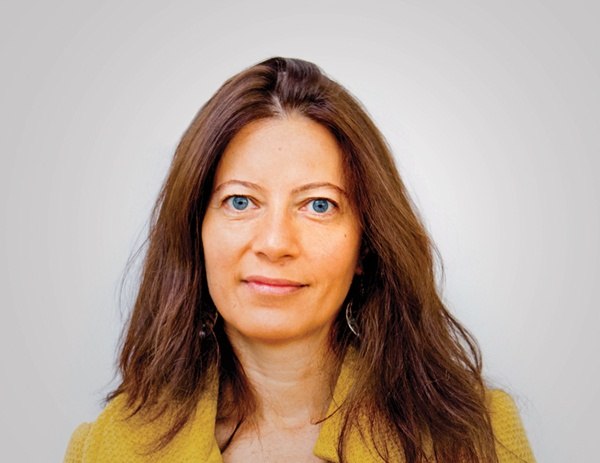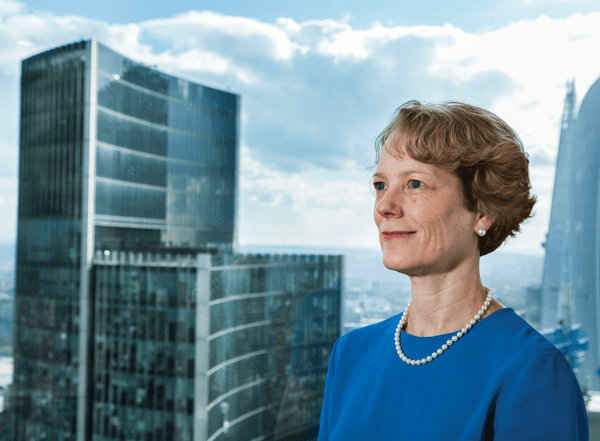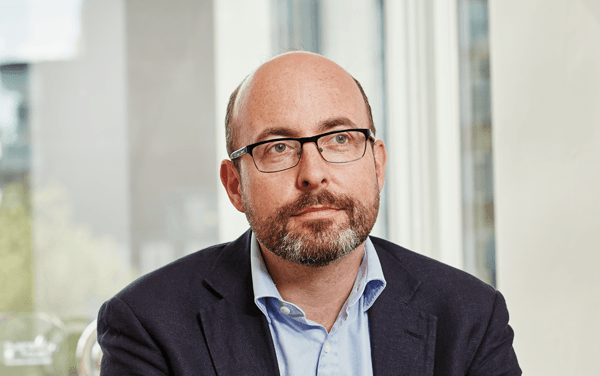Sabine Chalmers was concerned about coming back to the UK. Absent for more than two decades, most recently in the US as chief legal and corporate affairs officer at drinks giant Anheuser-Busch InBev, she had built a reputation as one of the leading lights of the general counsel community. But when she first left the UK, the GC role lacked stature, particularly in contrast to the US. ‘I was concerned about how a UK role would compare to the experience I’d had in the US.’
But she did return in 2018, to one of the most senior legal roles in the UK – BT group law chief. ‘It’s been encouraging and interesting because the role of the GC has grown. They sit at the top table and report to the chief executive, they have the compliance and company secretary hats: that’s great for the function.’
Why that has happened is clear. ‘There has been a massive explosion in regulation and a lot of compliance crises,’ Chalmers notes. ‘Some of the crises have given GCs and lawyers the opportunity to show what they can do to help companies solve problems.’ It has not all been post-banking crisis forces, however. Instead, many GCs talk about the influence of globalisation, new products and technology – more jurisdictions to cover and emerging digital economies with fresh legal challenges.
The In-House Lawyer surveyed 100 in-house lawyers at major companies and interviewed three dozen GCs to understand how the in-house legal market has evolved, and where it is headed. Despite the regular rhetoric of doing more for less, in-house headcounts and budgets have mostly increased. What has shifted has been where that money is spent, with many teams bringing more work in-house: 85% of survey respondents have a policy of doing this to reduce legal spend, up from 70% in 2015.

As a result, teams are being re-organised and roles are broadening. Commercial skills are increasingly considered a must, while managing risk is core to the job description. The trend is more accurately about doing more with more and spending less on external advisers. BAE Systems GC Philip Bramwell is blunt on the ramifications: ‘When I see corporate scandals I think, “What on earth was their GC thinking? What discussion at the board led them to reach the conclusion that that was the right thing to do?” As the role’s profile increases, the criticism of GCs when things go wrong will increase.’
Follow the money
When Maaike de Bie joined Royal Mail Group nearly five years ago, the rest of the business was convinced it could save money by shrinking the legal department. Since then, however, the legal team has almost doubled to just under 40 lawyers: largely through new lawyers based in Sheffield and a business crime team now reporting to the GC. External legal spend, understood to be more than £10m a year, has subsequently dropped more than 10%. ‘I’ve been able to prove that having more lawyers actually saves money,’ she says (it was announced in late November that de Bie is to join easyJet in early 2019).
In-house headcounts are still climbing. Legal departments at the biggest (and most regulated) companies rival law firms for size: Barclays has more than 700 globally; UBS 700; and BT 500. Teams at young, fast-growth companies have equally grown. Uber’s EMEA legal team is up from just 15 in 2015 to 50 today, while TransferWise has seven people where it had none just three years ago. Funding Circle GC Lucy Vernall was that company’s first full-time UK lawyer five years ago: the global team is now at 32.
It has not all been one-way traffic, with many other teams reporting declining headcounts. Insurer RSA has halved to 25 in the last five years, while budget fell 5% this year. Standard Life Aberdeen has fallen from 170 to about 100, impacted by its 2017 merger. But the statistics show overall in-house lawyer numbers on the up. The Law Society’s Annual Statistics Report 2017, published in June 2018, shows solicitors working in-house increased 3% to 27,767, or 22% of the profession. Our survey found 68% of teams have increased headcount in the last five years, the same proportion as The In-House Lawyer’s last in- house survey in 2015. A third of responding in-house teams now have more than 300 people.
Budgets too are broadly up. Nearly 60% of respondents say their budget increased in the last year, mirroring the proportion in 2015. Nearly a quarter reported an annual legal spend of more than £10m, compared to just 9% in 2015. More than half have a budget in excess of £1m. At KPMG, GC Jeremy Barton’s team has doubled to 39 lawyers in the last five years. His legal budget has increased by nearly half in the last year, while his external budget is up about 40% over the same period. It is clear why: the Big Four accountant has faced intense regulatory scrutiny, dominating the legal function’s workload.

No GC can see regulation and enforcement slowing anytime soon either. The Carlyle Group global GC for investments and head of Europe, Heather Mitchell, comments: ‘We’ll always ensure compliance with regulation and so if that’s where we need to direct the spend, that’s where the money will go.’
Vodafone’s legal function has grown 25% to 500 people in the last five years. Group GC and company secretary Rosemary Martin says that while the number of lawyers is flat – about 400 – the team has grown as new areas of work, such as compliance and GDPR, have come into the team. It is a recurring theme, with many functions growing as areas such as external affairs and public policy come into legal. Most in- house teams have added data privacy lawyers – regularly described as the hottest recruitment market. BAE’s team of 250 added half-a-dozen lawyers to cover cyber security and IT, another common area of growth. Bramwell comments: ‘We have to keep adding because the business is being presented with so many challenges in that area. That’s a significant investment, but it’s work best done in-house because of the specialist knowledge of the business it requires.’
The role is going to change hugely. The nature of people that get to be GCs will change. They will have spent more time in a business role – they won’t have come up through a traditional legal role.
Alison Kay, National Grid
GCs do not struggle to find talent. Private practice lawyers are better paid, but GCs believe the allure of a better work-life balance in-house remains strong. Blue-chip corporations and exciting brands have huge drawing power. Uber recently posted a UK job that attracted more than 150 applicants in a week.
UBS investment bank and EMEA GC Simon Croxford, who recently returned after 13 years at Barclays, has a team of about 200. He says the focus has shifted to what lawyers are working on, rather than how many there are, and on bringing more work internally (for more on teams bringing more work in-house, see ‘Shake it all about’, below). ‘Among other things, we’re looking at where we can most efficiently perform a legal task in-house. That means your headcount might go up in those areas, but in theory your total cost should come down. It’s important you continue to analyse and be flexible, and make sure you’re not too siloed, because change is constant.’

Rob Booth, The Crown Estate
The business of change
‘The role is going to change hugely in ten years’ time,’ says National Grid group GC and company secretary Alison Kay. ‘It will become broader and the nature of people that get to be GCs will change. They will have spent more time in a business role – they won’t have come up through a traditional legal role.’
Kay was UK transmission commercial director at National Grid before becoming GC in 2012. She is not alone in her view. More teams are offering business training and experience as part of professional development (see ‘The MBA all-stars’, below). Many in-house teams are going through some form of organisational design exercise too: FTSE 250 company Capita hired its first ever GC, Claire Chapman, in early 2018 to build a legal function, while Kingfisher is redesigning under GC Elizabeth Messud.
It’s not just legal risk, it’s regulatory risk, reputational risk – what’s the right thing to do? The role of the lawyer and compliance officer is fundamental to making those kinds of decisions.
Simon Croxford, UBS
Pearson’s legal team has reduced from 220 to 170 in the past five years, led by the work of associate GC for technology and strategy, Robert Mignanelli, and the legal operations team (for more on legal ops, see ‘Legal ops of horrors’, below). GC and chief legal officer Bjarne Tellmann has plans for a four- tier structure for the legal function. Legal operations will co-ordinate in-house lawyers, external law firms and alternative service providers. But this requires restructuring his in-house team to create smaller groups of highly-skilled lawyers who work on broader business issues and rely on New Law resourcing when required. His lawyers undertake MBA-style training at various external providers, but Tellmann believes a business school needs to develop a specific legal MBA.
‘It’s about how you move from troops and divisions all reporting into generals to special ops groups that are autonomous, upskilled and can plot their own paths. We’re at a good place in headcount, but the next step is breaking borders: taking on new tasks.’ His plan reflects broader trends: in-house legal departments are equipping themselves for broader roles within businesses. Pearson’s function has cut 40% from its fixed costs in recent years and is aiming for a further 20% over the next two. ‘We’ll have to get to the point where GCs are running their legal departments like CEOs,’ he says.
Coca-Cola European Partners GC and company secretary Clare Wardle says technology is a main driver: it will reduce some of the existing workload, which in turn frees up the function to make broader contributions. ‘Historically, lawyers have tended to advise on incidents and single cases as opposed to trends and big-picture processes. We need to move much more into that world because that’s where everyone else is going.’

But while almost every GC interviewed points to the impact technology will have, there are still few examples of fundamental changes. There are plenty of purported solutions out there, but many GCs are wary of buying external products. Some have partnered with start-ups: Network Rail, Trainline and Monzo are customers of Apperio, an external legal spend tracker, while Skyscanner has signed up to contract management platform Juro. Associated British Foods is looking at implementing AI tool Kira, while rival Luminance recently launched a dedicated in-house product. Lloyds Banking Group GC Kate Cheetham comments: ‘What technology promises and what can actually be delivered are still a distance apart due to the realities of setting up appropriate due diligence. Firms are working hard to deliver their own tech solutions, but there’s not a total breakthrough yet.’
There is a view a lot could change in the next 12-18 months, however, as GCs look to broaden roles by relying on technology for high-volume, low-value work. What could accelerate that further is the widely-held view that alternative legal service providers are expensive (for more, see ‘Assault on the alt’, below). Some believe the most innovative in-house teams, such as Shell and Unilever, could soon commercialise products for the wider market too.
But efforts have been focused on fee structures. Regular use of the hourly rate has come down marginally, from 55% in 2015 to 50% this year, while those who ‘never’ use it have risen from 12% to 18%. Fixed fees per project are used often by 67% of respondents, largely the same proportion as in 2015. Capped fees were similar: with the 55% often using these rates up on 52% in 2015 but down on 64% in 2014. Discounted rates remain prevalent, with 60% of in-house teams using them often, although this mechanism has lost its status as the most popular billing method to fixed fees per project.
Law firms are excellent and the way they work with us gives us more certainty over costs than ever before.
Ed Smith, Telefónica
Kay comments: ‘Hourly billing is still the norm and I’m no fan of hourly billing, but then I’m often thinking, “Well, what else can we do here?” What we do much more is individual tendering for certain pieces of work. We’ve got our panel, but if we’ve got chunky pieces of work we’ll then go back to them and ask, “What can you do this for?”’
That said, survey respondents ranked quality of advice, quality of service and experience in similar matters as all being more important than pricing levels and flexibility in billing. Nearly half said the main reason work was sent externally was because it was too complex to handle in-house, while just 13% said it was more cost-efficient. Most GCs agree external adviser attitudes have improved in the last five years. Telefónica UK GC Ed Smith, with an external legal spend of between £3m and £6m over that period, captures the tension. He is under cost pressure, but his first objective is to provide the best legal advice. ‘If I was just doing the second objective, no-one would thank me if I wasn’t also meeting the first. It’s inherently less important. Law firms are excellent and the way they work with us gives us more certainty over costs than ever before. It gives us more confidence.’
Shot to ribbons
Croxford believes in-house lawyers had a more clearly defined role a decade ago. But it has since widened to what he calls ‘holistic risk managers’. ‘It’s not just considering legal risk, it’s regulatory risk, reputational risk – what’s the right thing to do? The role of the lawyer and compliance officer is fundamental to making those kinds of decisions.’
Many GCs make the same argument about the future of in-house lawyers: as regulation and enforcement continue to sweep industries across jurisdictions, the prominence and responsibility of legal functions will rapidly expand. The Crown Estate GC Rob Booth comments: ‘If anyone calls me a “business partner”, I’ll thump them. It’s also why I hate the phrase “internal client”. You should be fully integrated into the business.’
The public has higher expectations of companies post- banking crisis, which often leads to new regulations. But people are increasingly concerned with ethical issues too: environmental and social impacts regularly attract publicity. Uber’s associate GC for EMEA, Matt Wilson, says: ‘You’re expected by default now to know and take into account, when giving advice, different considerations like the relevant politics, economics and the operational impact on the business, not just advise in a vacuum.’
That creates an opportunity for in-house legal teams to become more valuable. But, as the UK community increasingly aligns with the status legal departments have reached in the US, the repercussions and scrutiny will follow. Consider Felix Ehrat, who in May resigned as GC of Novartis because of a deal the company made with US President Donald Trump’s former lawyer, Michael Cohen, to learn more about approaches to healthcare. Ehrat’s parting statement was telling: ‘Although the contract was legally in order, it was an error.’
Bramwell concludes: ‘With greater influence comes greater levels of responsibility. If you have a higher profile, you’re going to get shot to ribbons when it all goes wrong. So while it’s energising being valued and making more of a contribution, perhaps we’ll see a little more downside over the next ten years.’
hamish.mcnicol@legalease.co.uk
The MBA all-stars: training and development for GCs
In-house legal teams have become more sophisticated over the last 20 years but, according to many general counsel, the pressure to widen their skillsets over the next decade is intense.
For Pearson GC Bjarne Tellmann, the roundedness of the modern in-house lawyer starts with the training they receive, but he laments a hole in the market. He sends his trainees to receive mini-MBAs or ‘executive MBA-style training’ from a range of institutions, including Deloitte University. Oxford and Harvard also provide mini-MBAs.
Tellmann comments: ‘There’s a huge opportunity for a business school to do a legal MBA. We’re getting to the point where GCs are running their legal departments like CEOs, or they’re thinking about budget, strategy and culture. It’s much more about leadership and building a team.’
He is not the only GC placing more importance on lawyers getting a broader education. Royal Mail’s legal chief Maaike De Bie has established an internal training academy. ‘Instead of just training lawyers in law we focus on all different kinds of topics, such as management skills, networking and even meditating,’ she says.
But this approach has come from the top as well as the bottom: De Bie has overseen a radical shift in the make-up of her senior team since joining five years ago. She says: ‘We trained everyone to make sure they’re financially astute, so now people are fixed on getting the best value from external partners.’
Kirsty Cooper (pictured above), GC and company secretary of Aviva, has a different training initiative for widening legal expertise. Launched this year and dubbed ‘Missions’, the programme sees small teams of six to eight people given a business problem to solve in eight weeks before presenting back to the legal leadership team. Cooper says Missions has ‘landed really well’ and ‘got the lawyers to think more like business people’. As part of the initiative, the lawyers also get support and mentorship from other people within the business. Aside from Missions, Aviva also sponsors anyone in the function who wants to undertake an MBA. Three lawyers are currently taking up the offer, with another three set to be sponsored.
In conjunction with the need for greater training is the need to coax lawyers out of silos. At Vodafone, legal chief Rosemary Martin is keen to ditch specialisms in favour of a team of generalists. ‘We’re going to get our lawyers to become more comfortable advising on things they currently don’t know much about. At the moment, we are organised into teams in specialist areas, but we need to have our lawyers comfortable advising on anything.’
One of the key areas into which in-house lawyers are expected to branch out is in influencing the law rather than just reacting. Neil Murrin, GC of mobile ticketing app Trainline, has diverted considerable resources towards lobbying the government to improve transport infrastructure. ‘In the transport world, things have been done for a long time in a more analogue way. I’ve been talking to politicians over the last year about how great mobile ticketing can be.’ Likewise, Cooper has emphasised the need to influence legislation before it comes out. Her legal team has swelled from 320 to 360 as a result of this focus on public policy. She says: ‘Our public policy team has punched above its weight in terms of influencing legislation before it’s enacted.’ She says her team and the UK general insurance business were a ‘driving force’ behind the controversial ‘whiplash’ Civil Liability Bill, which raised the minimum claim threshold to £2,000 to ease the onslaught of false claims on insurers.
Telefónica GC Ed Smith feels the sophistication of in-house legal teams has plateaued in the last five years, but argues it is possible for there to be greater developments in the next decade. He concludes: ‘Businesses will employ more lawyers, but not in the traditional sense. There will be many more lawyers operating outside their typical skillsets. The sort of people who trained in-house and then stepped out into non-legal roles. That will become normal.’
Assault on the alt: GCs on the new law providers
For all the rampant spin around alternative legal suppliers, it is safe to say general counsel have been less than satisfied with their services.

But he is less pleased with the rates these providers charge, often reaching around £800 a day. ‘Back in the day, you’d just pay the salary of whoever you were using, but now it’s moved to this day rates model. Are there no volume benefits they can give us? The rates can be very expensive.’
Stuart Kelly, Network Rail’s GC, goes further. Despite many conversations with such providers over the years, he describes them as being not as commercially keen as he would expect: ‘They’re just a little bit cheaper than a secondee from one of my firms, which I know and can be assured of the quality. I’m deeply disappointed after all the years of talk. It needs to be cheaper to the point where it’s an absolute no-brainer.’
Kelly is not the only one who sees more value in secondees. RSA’s GC Charlotte Heiss argues there is more gain, as both the insurance giant and its external counsel benefit from the arrangement. Chris Newby, legal head of AIG, has used LOD for maternity cover, but says he is ‘surprised’ at the popularity of such providers, because they’re ‘quite expensive’. He adds: ‘I watch their model with interest, to see whether it comes under pressure. For maternity leave cases, it’s been better for us to get someone from a law firm and contribute to their salary, because it’s cheaper than Axiom.’
KPMG legal chief Jeremy Barton mentions using Integreon for outsourcing and LOD for temp sourcing, but seems more excited by the prospect of using ‘consortia’ of external advisers instead. He says there is an increasing trend for a specific trio of a Magic Circle firm, a mid-tier firm and a new law provider to collaborate and offer services to clients as a team. He would be interested in using a consortium for a big regulatory investigation or real estate portfolio, but notes: ‘I don’t know whether to try it on a big deal and run the risk, or do it on a small matter and not really test it properly.’
Despite some grumbles, there are still believers in the alternative model. Catherine Johnson (pictured above), GC of London Stock Exchange Group, runs her own ‘managed legal service’, where entire high-volume parts of the legal function are outsourced to providers such as LOD and Radiant. ‘It’s an efficient way to resource and with a small team like mine, it’s important to keep them engaged through a variety of skilled work. Outsourcing has also created a huge amount of data that we can use to work out how best to focus our time and resources.’
Likewise, Vodafone GC Rosemary Martin has integrated Axiom resources into her Belfast legal team, echoing Johnson’s admiration for the data it produces. Martin has also trialled Lexoo, a lawyer-sourcing service often likened to Uber, but experienced teething problems: ‘We just wanted to use them as a supplier and let them identify the sort of lawyer they needed. They have now shifted their model for us and we’re hoping to use their resources more.’
Indeed, some in-house teams have such a thirst for alternative providers they are setting up new dedicated adviser panels specifically for them. Pearson, led by legal head Bjarne Tellmann, is looking to establish a panel exclusively for alternative providers in 2019. The Royal Bank of Scotland and its GC, Michael Shaw, have unveiled similar plans. On a recent Vodafone panel, Lexoo was selected alongside a host of mainstream providers.
But if there are problems, do they lie with the providers, or are GCs just not getting the best out of them? Martin concludes: ‘The quality of these providers varies with the lawyer. You have to remember there’s a difference between managed legal services like Axiom and the Lexoo model. If you invest in managed legal services and they understand how you work, it can be a really valuable and successful relationship.’
According to our survey, the non-law firm providers of legal services that have had the most impact on clients’ minds are the accountants: both EY and PwC appear in our top five list. However, there are some indications that this is a halo brand effect of the Big Four rather than actual use by senior GCs. And the most established players in this market, Axiom and LOD, still appear to be widely used. The new addition is online paralegal resourcing service, F-Lex, which had a breakthrough in 2018, winning Legal Innovator of the Year at the Legal Business Awards.
Shake it all about: in-house versus external advisers
Alongside the oft-spouted rhetoric of ‘more for less’, in-house lawyers are more frequently bringing work in-house and trying to wean themselves off external advisers and panels. In our survey, 85% said their company has a policy of retaining more matters in-house to reduce legal spend. When asked the same question in 2015, only 70% of general counsel responded the same way.
Matt Wilson, Uber’s associate GC for the EMEA region, says that when he joined the ride-hailing platform in 2017 around 75% of the company’s legal budget was being spent externally. For 2018, Wilson estimates that figure is around 58%. ‘We’re working through next year’s budget at the moment; I would love to get it to around 50%.’
A majority (44%) of survey respondents indicated they were most likely to go external on specialist matters and this was borne out in our in-depth interviews with GCs. Dan Toner, GC of healthcare provider Spire, insists he only goes direct to counsel when he needs to, typically ‘something techie around GDPR for example’. Likewise, GC of food giant Nestlé, Mark Maurice-Jones, says he will use external counsel if they have specialist expertise or ‘in a particularly risky area’.
Carol Hui sought to overhaul the spending strategy of Heathrow Airport when she joined as GC in 2009. At the time, the company had a greater tendency to outsource work. ‘I strengthened up the in-house team and now we do a lot more in-house.’ However, she admits: ‘Because the company is so complex and we can’t staff up like a full law firm, we need to find a balance.’ As a result, Hui also finds herself seeking specialist counsel: ‘We wouldn’t recruit somebody for a very niche area.’
For Skyscanner’s GC Carolyn Jameson (pictured above), her reluctance to operate a formal panel and to outsource more generally is a matter of received wisdom. ‘You build up specialist knowledge over time of the issues that arise. We only go to external firms for ad hoc queries or something that’s very jurisdictional, some kind of peculiarity.’
Not everyone is following this internal trend, however. Some GCs reported an inclination to outsource commoditised work where possible and leave the in-house team to take over what Standard Life Aberdeen GC Rushad Abadan calls ‘the interesting stuff’. Perhaps the most striking example of a major outsourcing shift comes from Catherine Johnson, GC of the London Stock Exchange Group. She operates her own managed legal service that sees entire high-volume aspects of the legal function outsourced to alternative providers (for more on this, see ‘Assault on the alt’).
But overall, external counsel is just the first to fall when it comes to cost-cutting. Clare Wardle, GC of Coca-Cola European Partners, concludes: ‘Every corporate department, not just legal, is told they have to keep their budgets flat. It’s difficult to say “I want 15 more lawyers” unless your external spend is going to be cut by doing that. External counsel is the low-hanging fruit on that one.’
The need for value for money and specialist advice is best indicated by the most recommended law firms for external advice from our survey. As was the case three years ago, all of the Magic Circle firms were recommended overall and Allen & Overy, Clifford Chance, Freshfields Bruckhaus Deringer and Linklaters were cited as among the top-ten firms for value for money, as well as for strategic, high-quality legal advice. This all underlines the fact that if advice is good, it adds value, regardless of price. Three other firms that performed well across both categories are Baker McKenzie, Eversheds Sutherland and Pinsent Masons – proof that high-impact legal advice is not necessarily the preserve of the City elite.
Legal ops of horrors
Despite clear progression in the use of non-legal business professionals within in-house teams, general counsel often still see ‘legal ops’ as more buzzword than beneficial.
There have been successes. Mo Ajaz is the highly regarded chief operating officer (COO) at National Grid and, according to GC Alison Kay, he is vital in driving efficiencies. ‘We have a drive to make us much more business-friendly and to act more like a business, as well as bringing in tech. We know which outside vendors to look to when it comes to tech.’
Thanks to this business focus, National Grid has become ‘much more alive to who is working on a particular job’, Kay says. She adds: ‘For example, why have we got 19 external lawyers working on a particular job which looks straightforward?’ The function is forecast to have reduced its spend by 25% over the last three years.
Neil Murrin (pictured above), GC at transport app Trainline, describes the implementation of a legal ops team as ‘the biggest change’ his team has gone through in the last year. The new ops team led by Holly Manvell and Keruschka Shunmugam has overseen an overhaul in technology, with the legal function now utilising Jira software and Kanban Boards to keep track of resources, time and what is going in and out. ‘The last thing lawyers want to be doing is timesheets. It means we can talk to the business about where resources are being used – a prioritisation discussion.’ Aviva’s legal head Kirsty Cooper says the company had a false start with its first legal ops director but has since brought in Caroline Brown to ‘bring some rigour to our internal and external spend, tech and use of data.’
For others, however, the very notion of legal ops is met with derision. Angus McBride, GC of News UK, recalls: ‘I went to this conference recently and it was the same old crap about needing a COO.’
Philip Bramwell, GC of defence company BAE Systems, is equally cynical: ‘I spent 16 years in IT and telecoms, so I’m very used to inventing solutions to problems people never realised they had.’ He insists that the current legal ops fad is undermined by the software currently available on the market: ‘A lot of the software is in its infancy. Many of the programmes are not much more than relational databases you could write in Excel if you thought it was important.’
There has been a marked absence of major tech ‘wins’ over the last 12 months, mirroring the general lack of enthusiasm around legal ops. Stuart Kelly, head of legal at Network Rail, happily reports using Apperio to track his legal spend but is otherwise unimpressed by external adviser attitudes to tech. ‘I’m not pointing a finger at anyone in particular, but all firms have been telling us how innovative they are and some of them have got big badges like “innovation law firm of the year”. It just doesn’t manifest itself.’
He believes in-house departments need to drive innovation and describes law firms driving this change as ‘an illusion’. ‘We know our problems better than anyone else, so we should be driving the innovation rather than law firms voluntarily coming up with innovation because it will come incredibly slowly.’





